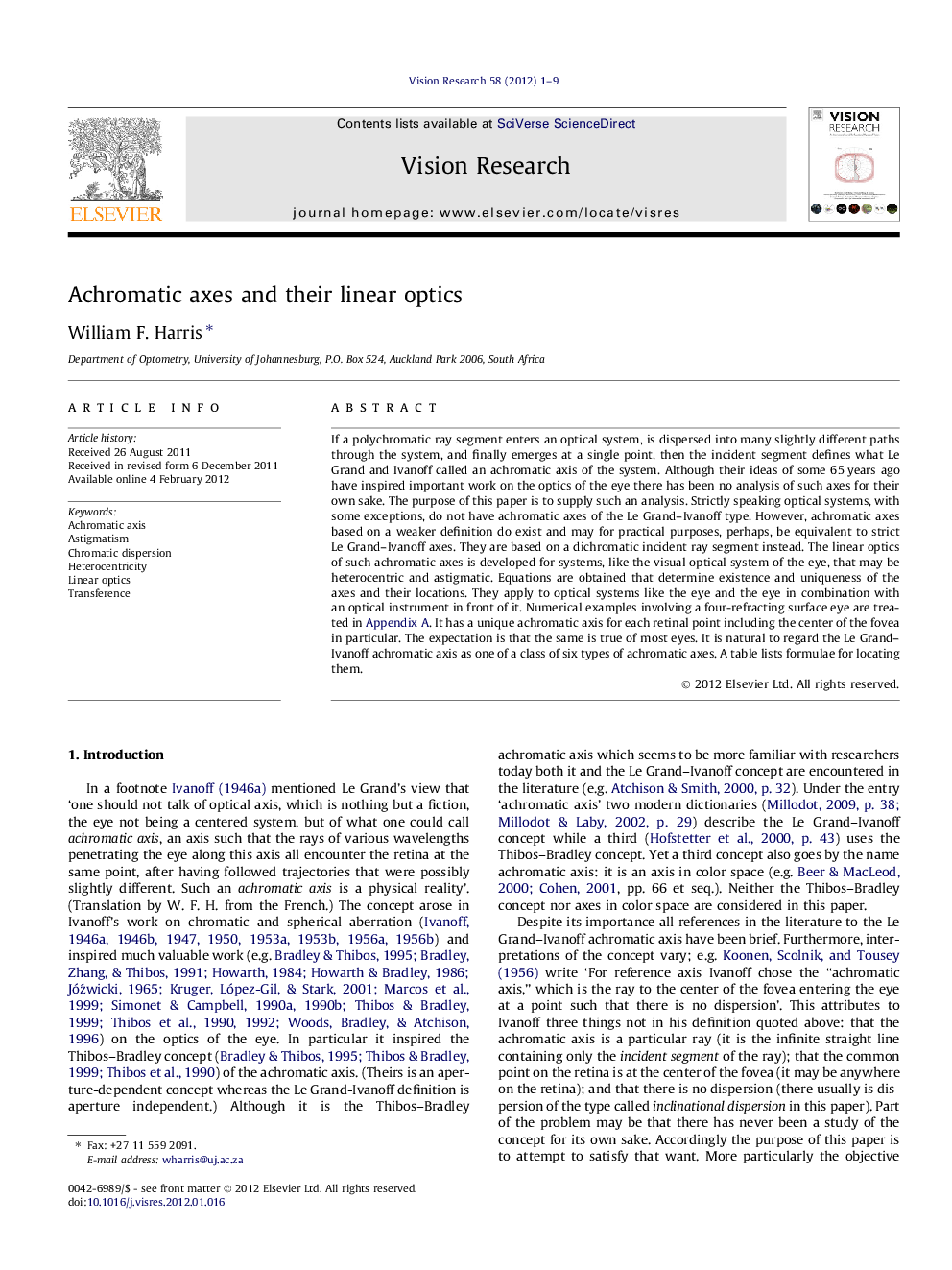| Article ID | Journal | Published Year | Pages | File Type |
|---|---|---|---|---|
| 4034040 | Vision Research | 2012 | 9 Pages |
If a polychromatic ray segment enters an optical system, is dispersed into many slightly different paths through the system, and finally emerges at a single point, then the incident segment defines what Le Grand and Ivanoff called an achromatic axis of the system. Although their ideas of some 65 years ago have inspired important work on the optics of the eye there has been no analysis of such axes for their own sake. The purpose of this paper is to supply such an analysis. Strictly speaking optical systems, with some exceptions, do not have achromatic axes of the Le Grand–Ivanoff type. However, achromatic axes based on a weaker definition do exist and may for practical purposes, perhaps, be equivalent to strict Le Grand–Ivanoff axes. They are based on a dichromatic incident ray segment instead. The linear optics of such achromatic axes is developed for systems, like the visual optical system of the eye, that may be heterocentric and astigmatic. Equations are obtained that determine existence and uniqueness of the axes and their locations. They apply to optical systems like the eye and the eye in combination with an optical instrument in front of it. Numerical examples involving a four-refracting surface eye are treated in Appendix A. It has a unique achromatic axis for each retinal point including the center of the fovea in particular. The expectation is that the same is true of most eyes. It is natural to regard the Le Grand–Ivanoff achromatic axis as one of a class of six types of achromatic axes. A table lists formulae for locating them.
► Achromatic axes are defined in systems that may be heterocentric and astigmatic. ► Equations are written for them in linear optics. ► Solutions to the equations locate the achromatic axes. ► An eye has a unique achromatic axis for each point on the retina.
